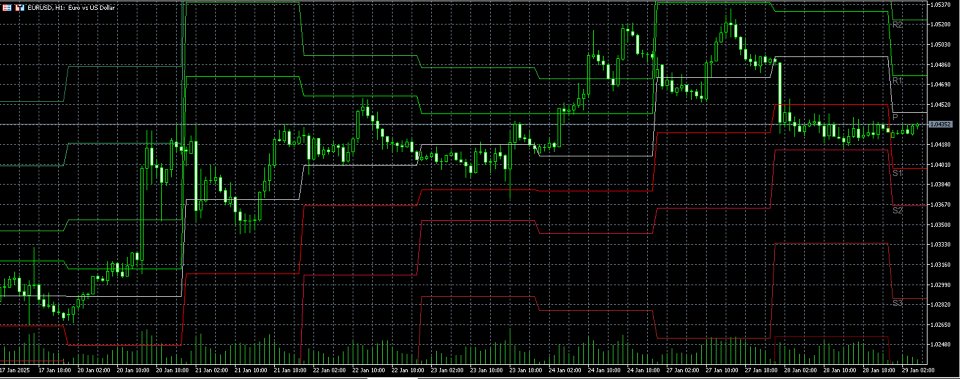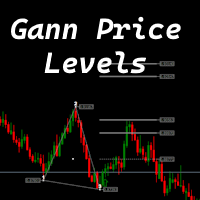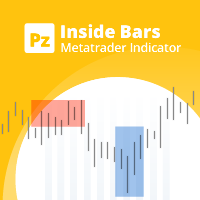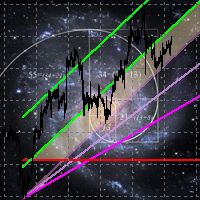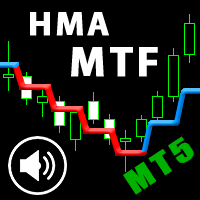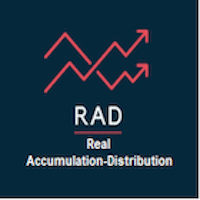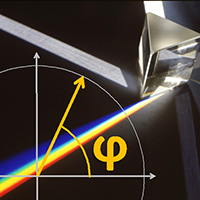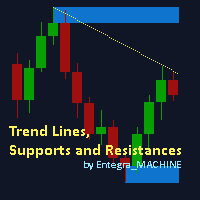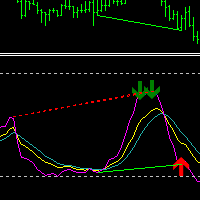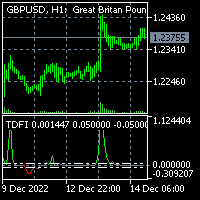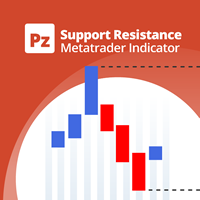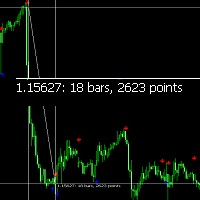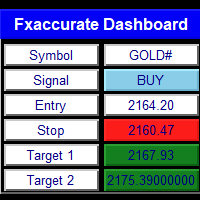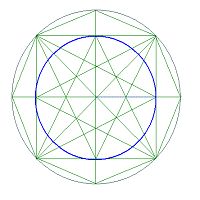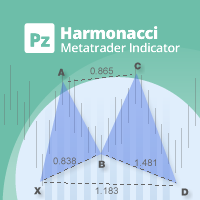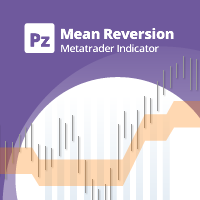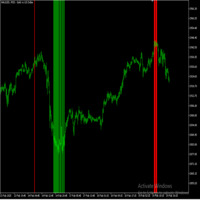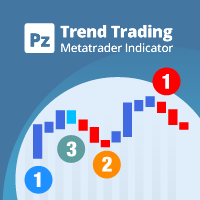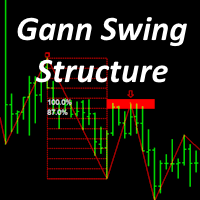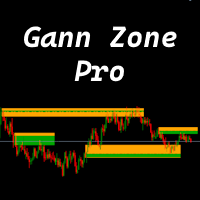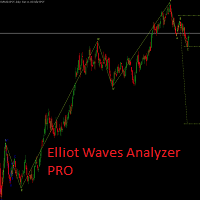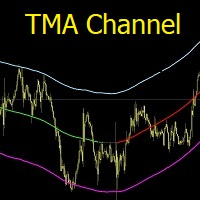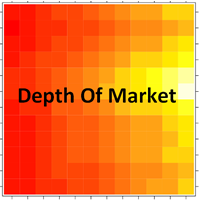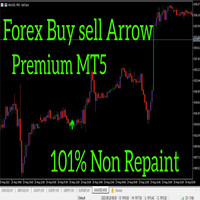Pivots Levels
- Indicatori
- Garfield Heron
- Versione: 1.1
- Aggiornato: 31 gennaio 2025
- Attivazioni: 5
Summary
This indicator plots multiple pivot points (support and resistance levels) using various calculation methods, allows customization of their appearance, and can alert when price touches these levels. It works on different timeframes and can display historical levels or just the current ones.Overview
-
Purpose: Plots dynamic pivot levels (Pivot, S1-S4, R1-R4) on the chart to help identify potential price reversal zones.
-
Key Features:
-
Supports 7 calculation methods (Classic, Camarilla, Woodie, Fibonacci, etc.).
-
Displays levels either for the current period (Today) or historically across past bars.
-
Customizable visuals (colors, line styles, widths) and alerts for price touches.
-
Input Parameters
-
Timeframe: Choose the base period for calculating pivots (e.g., Daily, Weekly).
-
Calculation Mode:
-
Classic 1/2: Traditional (H+L+C)/3 formula with derived support/resistance.
-
Camarilla: Uses previous close and range for tighter levels.
-
Woodie: Incorporates the current open price.
-
Fibonacci/Fibonacci Retracement: Applies Fib ratios to the prior period's range.
-
Floor: Modified classic formula with additional levels.
-
-
Display Mode: Show levels for the current period or historical bars.
-
Visual Customization: Toggle labels, price tags, line colors/styles/widths.
-
Alerts: Trigger popups, emails, sounds, or notifications when price touches levels.
Indicator Logic
-
Data Handling:
-
Uses historical price data (High, Low, Close, Open) from the selected timeframe.
-
Adjusts for weekends if Include Sundays is disabled.
-
For historical mode, plots levels on past bars; for today mode, draws horizontal lines extending into the future.
-
-
Calculation Methods:
-
1. Classic 1
Formula:
-
Pivot (PP) = (High + Low + Close) / 3
-
R1 = 2*PP - Low
-
S1 = 2*PP - High
-
R2 = PP + (High - Low)
-
S2 = PP - (High - Low)
-
R3 = R2 + (High - Low)
-
S3 = S2 - (High - Low)
Key Features:
-
Most widely used traditional method.
-
Focuses on the previous period's price range.
-
Levels expand symmetrically from the pivot.
Usage:
-
Best for daily/weekly charts to identify mid-term support/resistance.
2. Classic 2
Formula:
-
Pivot (PP) = (High + Low + Close + Open) / 4
-
R1 = 2*PP - Low
-
S1 = 2*PP - High
-
R2 = PP + (High - Low)
-
S2 = PP - (High - Low)
-
R3 = PP + 2*(High - Low)
-
S3 = PP - 2*(High - Low)
Key Features:
-
Incorporates the open price into the pivot calculation.
-
Produces slightly different levels than Classic 1.
Usage:
-
Suitable for markets where the opening price is significant (e.g., futures).
3. Camarilla
Formula:
-
R1 = Close + 1.1/12*(High - Low)
-
S1 = Close - 1.1/12*(High - Low)
-
R2 = Close + 1.1/6*(High - Low)
-
S2 = Close - 1.1/6*(High - Low)
-
R3 = Close + 1.1/4*(High - Low)
-
S3 = Close - 1.1/4*(High - Low)
-
R4 = Close + 1.1/2*(High - Low)
-
S4 = Close - 1.1/2*(High - Low)
-
PP = (R1 + S1) / 2
Key Features:
-
Focuses on the previous close and tight intraday ranges.
-
Levels cluster closer to the price, ideal for short-term trading.
Usage:
-
Popular for intraday trading (e.g., scalping on 5M/15M charts).
4. Woodie
Formula:
-
Pivot (PP) = (High + Low + 2*Open) / 4
-
R1 = 2*PP - Low
-
S1 = 2*PP - High
-
R2 = PP + (High - Low)
-
S2 = PP - (High - Low)
-
R3 = High + 2*(PP - Low)
-
S3 = Low - 2*(High - PP)
Key Features:
-
Emphasizes the current day's open price.
-
Levels adjust dynamically with price action.
Usage:
-
Effective in trending markets for intraday breakouts.
5. Fibonacci
Formula:
-
Pivot (PP) = (High + Low + Close) / 3
-
R1 = PP + 0.382*(High - Low)
-
R2 = PP + 0.618*(High - Low)
-
R3 = PP + 1.0*(High - Low)
-
S1 = PP - 0.382*(High - Low)
-
S2 = PP - 0.618*(High - Low)
-
S3 = PP - 1.0*(High - Low)
Key Features:
-
Applies Fibonacci ratios to the prior period's range.
-
User can customize ratios (default: 38.2%, 61.8%, 100%).
Usage:
-
Ideal for identifying retracement zones in swing trading.
6. Floor
Formula:
-
Pivot (PP) = (High + Low + Close) / 3
-
R1 = 2*PP - Low
-
S1 = 2*PP - High
-
R2 = PP + (High - Low)
-
S2 = PP - (High - Low)
-
R3 = R1 + (High - Low)
-
S3 = Low - 2*(High - PP)
Key Features:
-
Derived from classic formula but adds unique R3/S3 calculations.
-
Levels expand asymmetrically.
Usage:
-
Useful in volatile markets to capture extended price moves.
7. Fibonacci Retracement
Formula:
-
PP = Low + 0.5*(High - Low)
-
R1 = Low + 0.618*(High - Low)
-
R2 = Low + 0.786*(High - Low)
-
R3 = High
-
S1 = Low + 0.382*(High - Low)
-
S2 = Low + 0.236*(High - Low)
-
S3 = Low
Key Features:
-
Based purely on Fibonacci retracement levels of the prior range.
-
Pivot (PP) acts as the 50% retracement level.
Usage:
-
Best for counter-trend strategies to spot pullback entries.
Key Takeaways:
-
Classic Methods: Balance simplicity and symmetry.
-
Camarilla/Woodie: Optimized for intraday trading with tighter levels.
-
Fibonacci-Based: Align with harmonic patterns and retracements.
-
Customization: Users can adjust Fibonacci ratios and toggle levels.
Each method caters to specific trading styles, from scalping (Camarilla) to swing trading (Fibonacci). The choice depends on market conditions, timeframe, and strategy goals.
-
-
-
Visualization:
-
Draws trend lines for each level.
-
Adds price tags and text labels for clarity.
-
Updates buffers to display/hide levels based on user toggles.
-
-
Alerts:
-
Monitors price crossings of pivot levels.
-
Triggers alerts via multiple channels (popup, email, sound) when a level is breached.
-
Usage Scenarios
-
Day Trading: Use intraday timeframes (e.g., 1H) with Camarilla for short-term reversals.
-
Swing Trading: Apply Fibonacci levels on Daily charts to identify key zones.
-
Backtesting: Analyze historical pivot reactions in historical display mode.
Advantages
-
Flexibility: Multiple calculation methods cater to different trading styles.
-
Customization: Full control over appearance and alerts.
-
Multi-Timeframe: Works on any timeframe, even if higher than the chart’s period.
Limitations
-
Repainting in Historical Mode: Levels are drawn on past bars, which might not reflect real-time conditions.
-
Weekend Gaps: May require adjustment for markets that close over weekends.
Example Output
-
Chart Display: Horizontal lines labeled P, S1-S4, R1-R4 with customizable styles.
-
Alert: "EURUSD (Cam Daily) - R1 (1.1850) touched" sent via email/popup.

